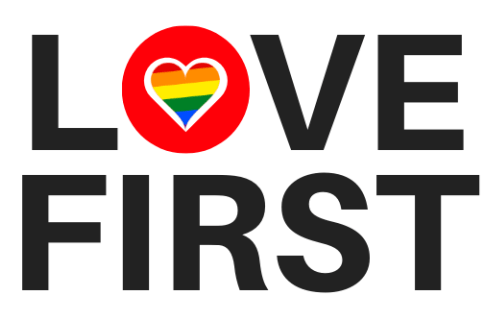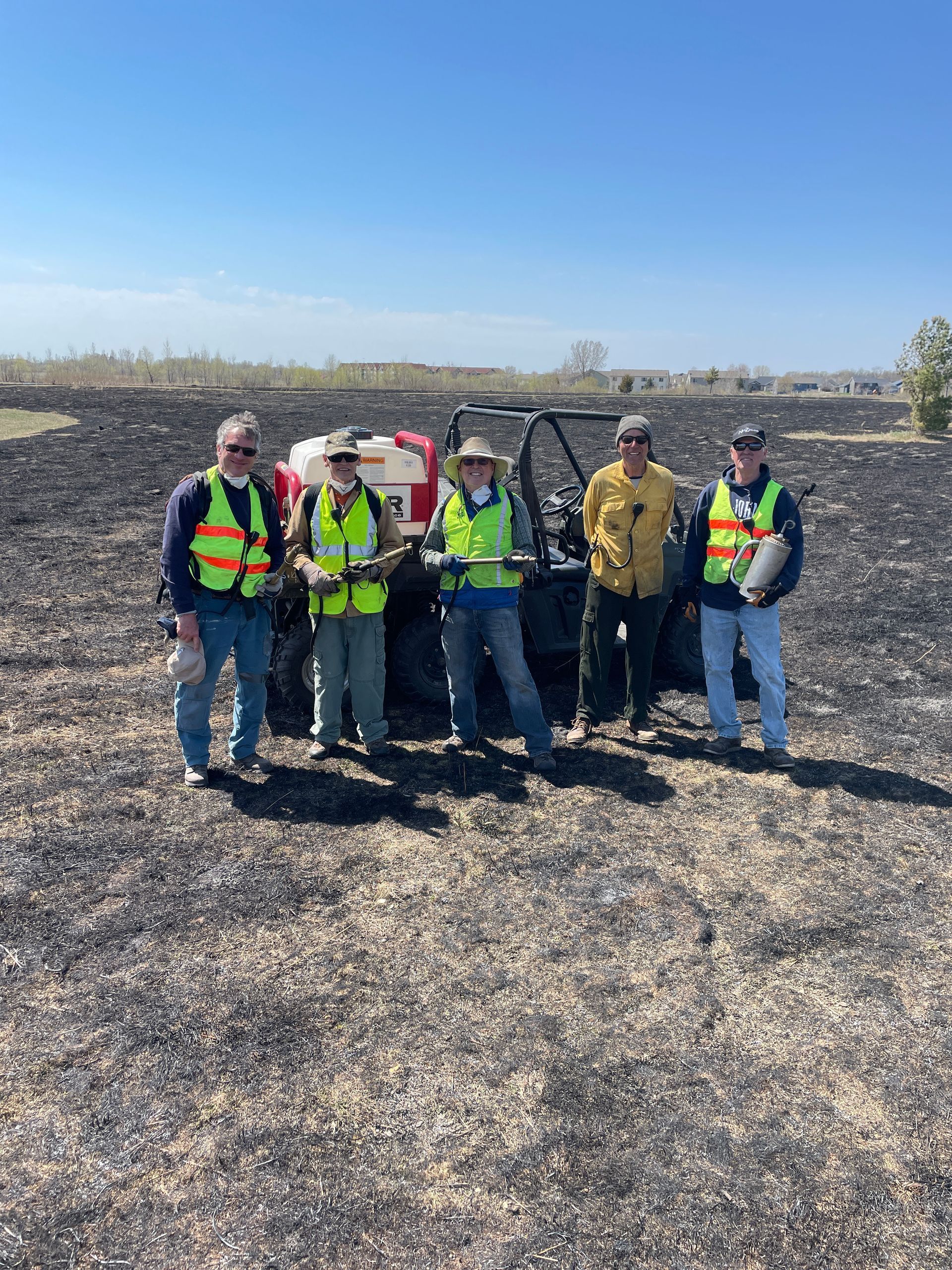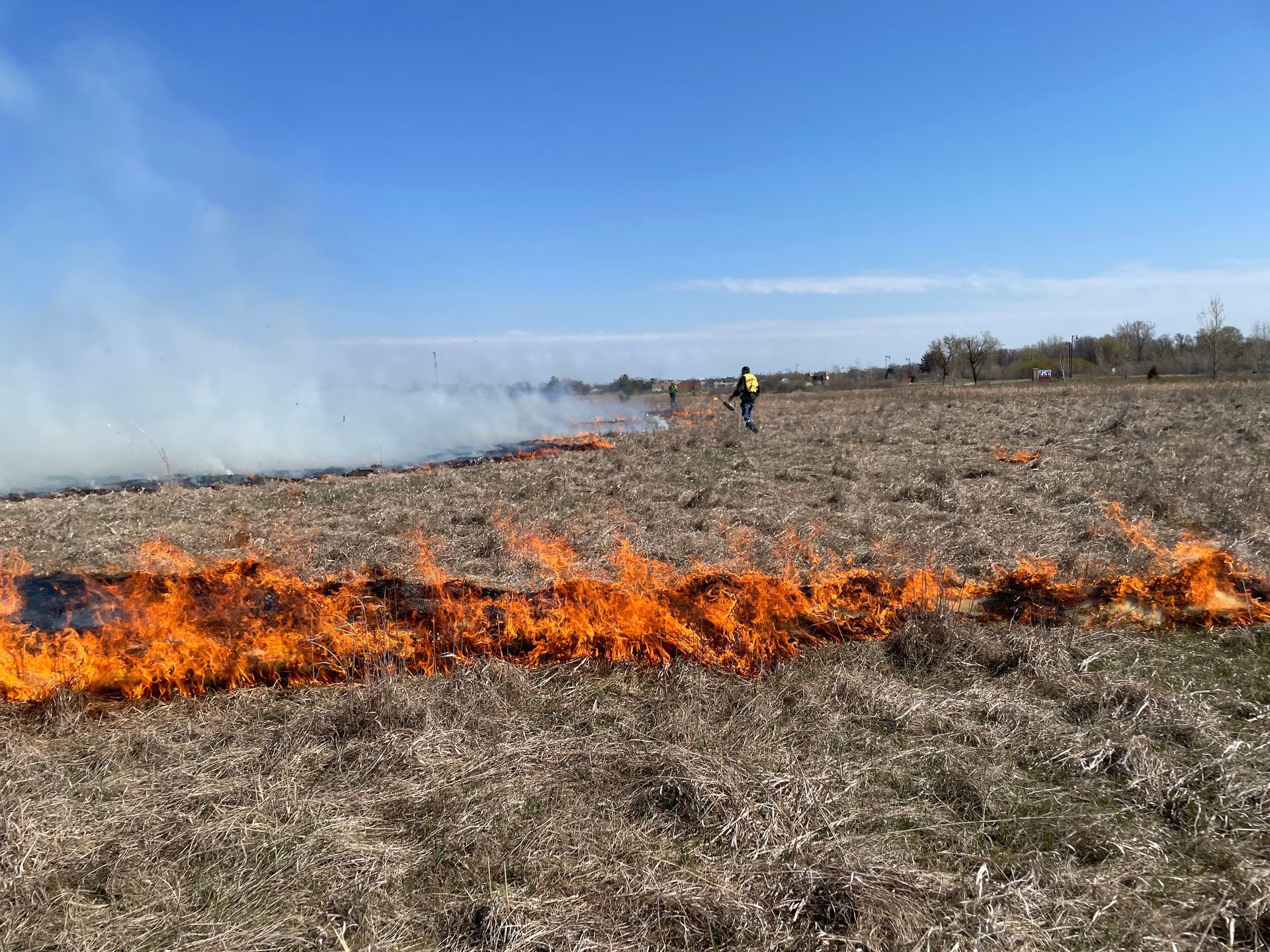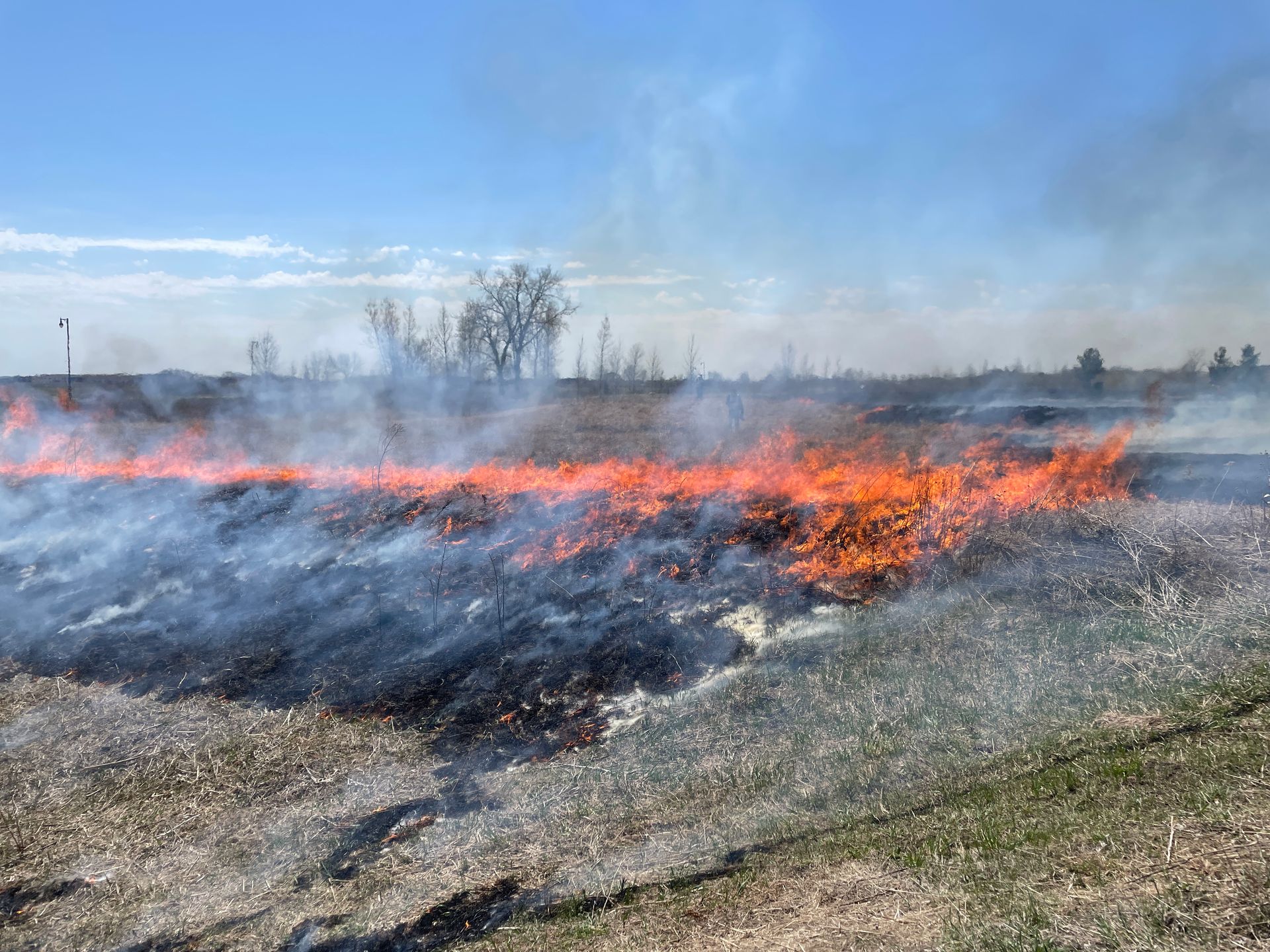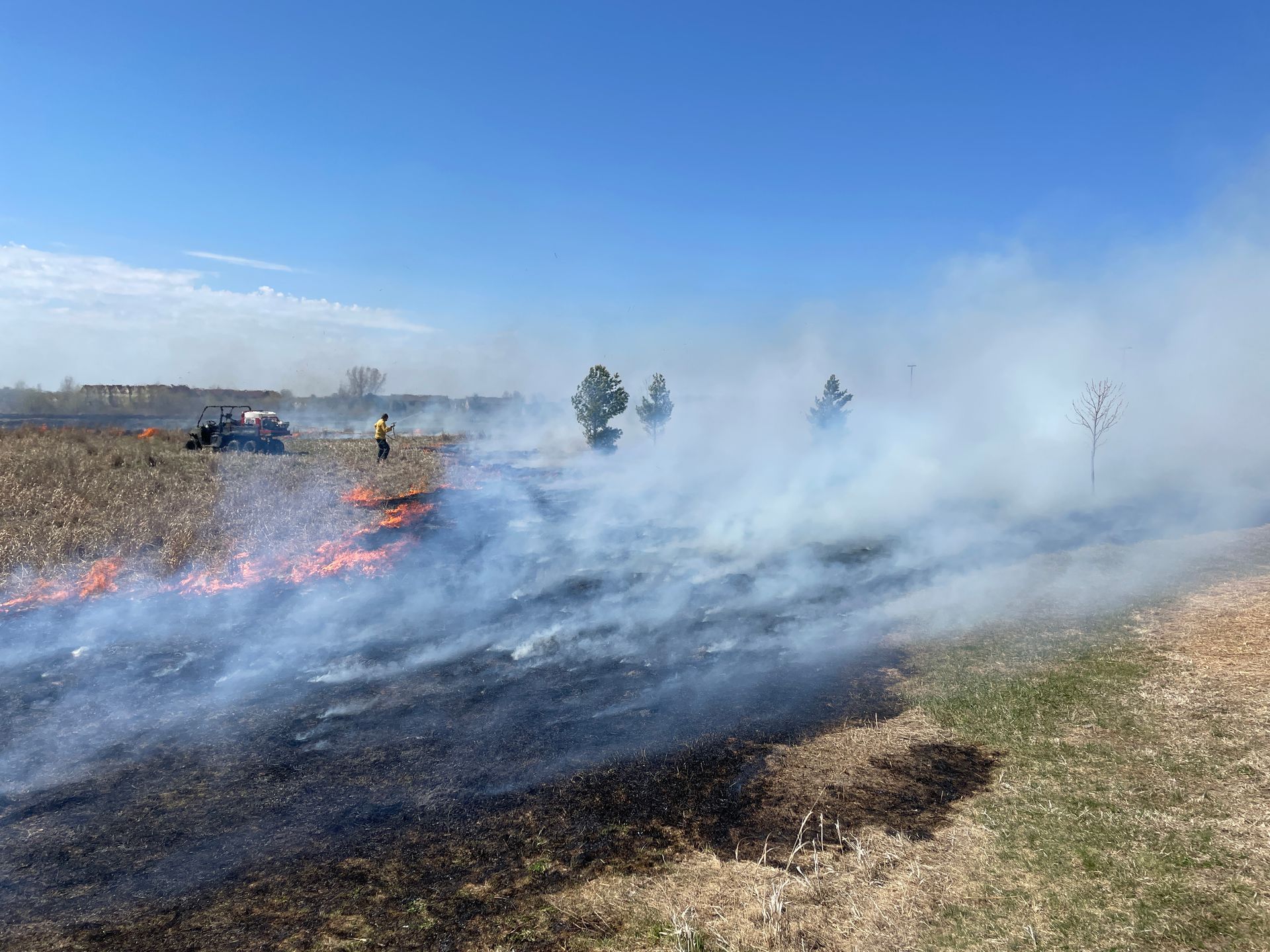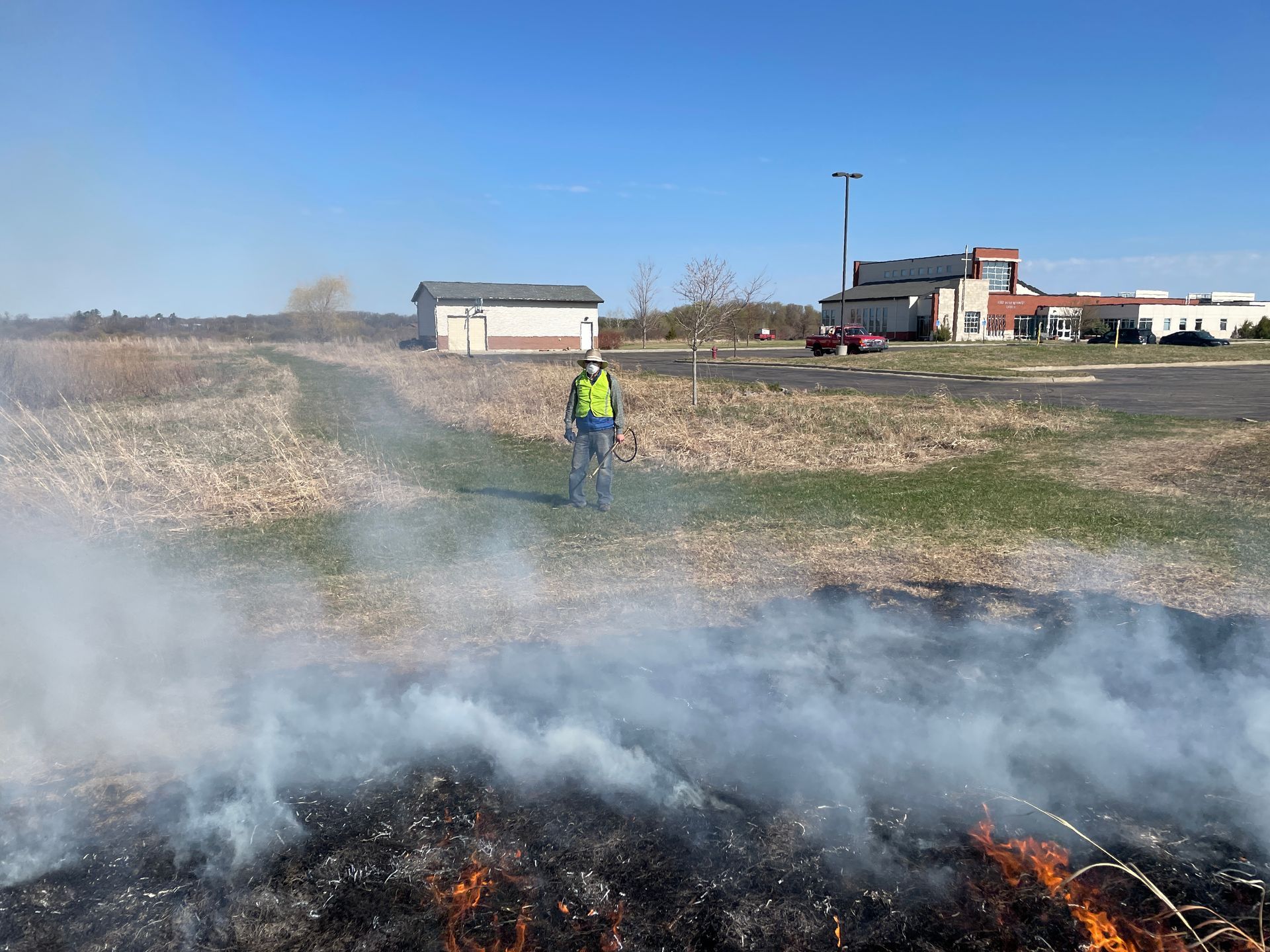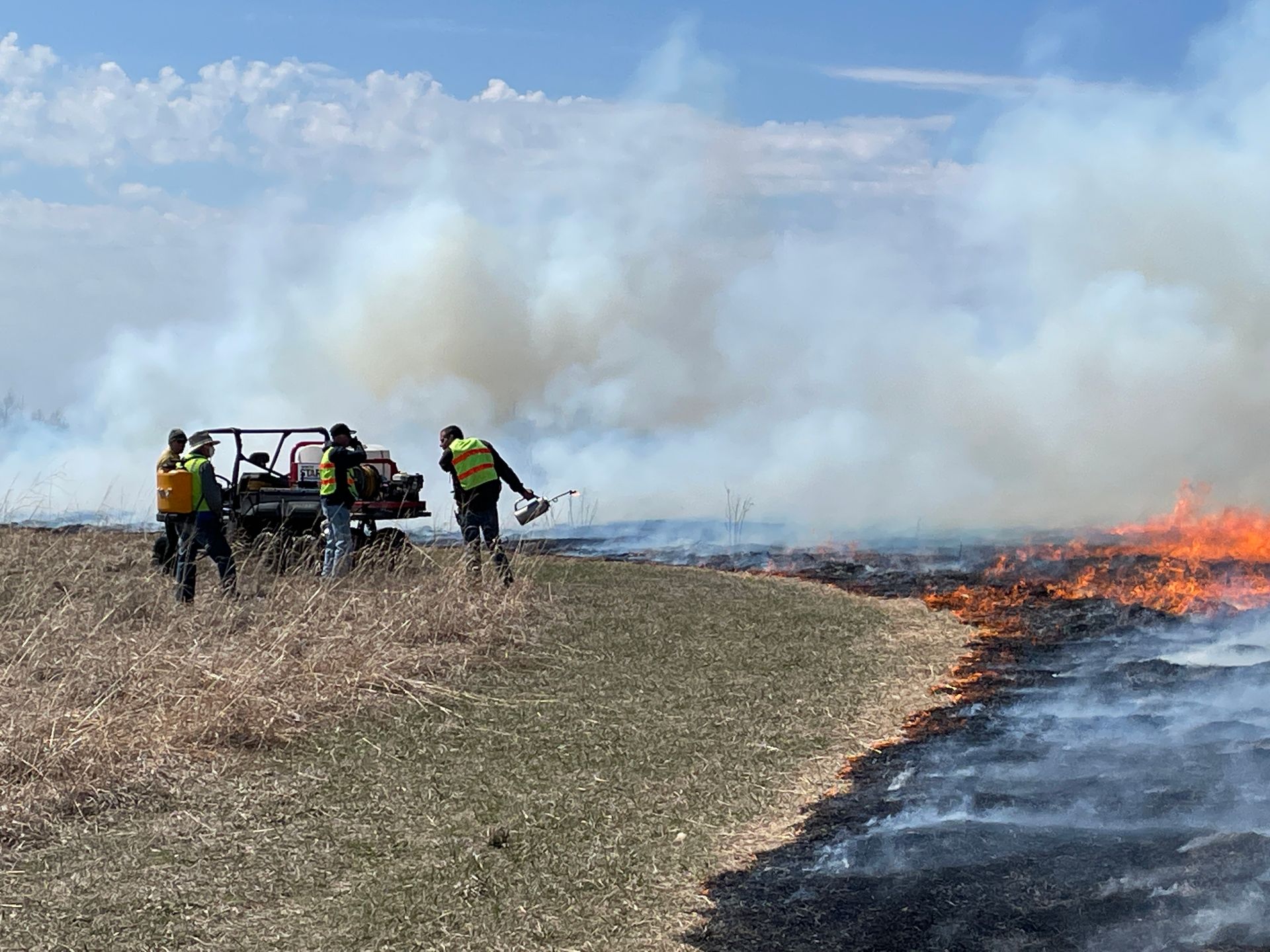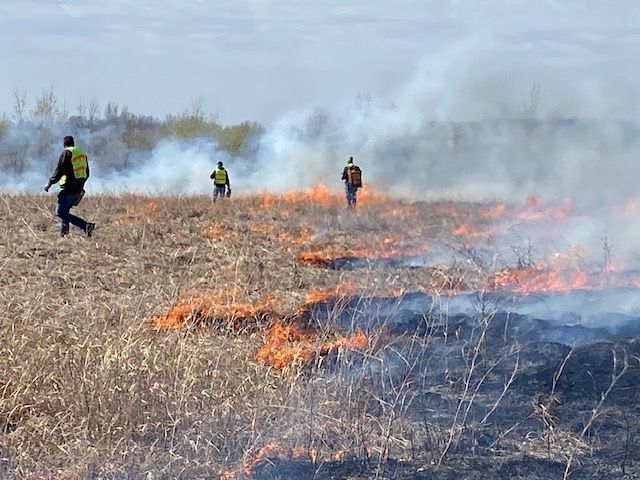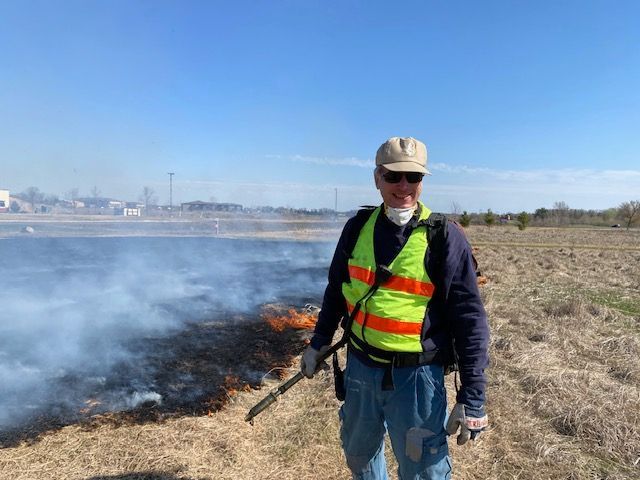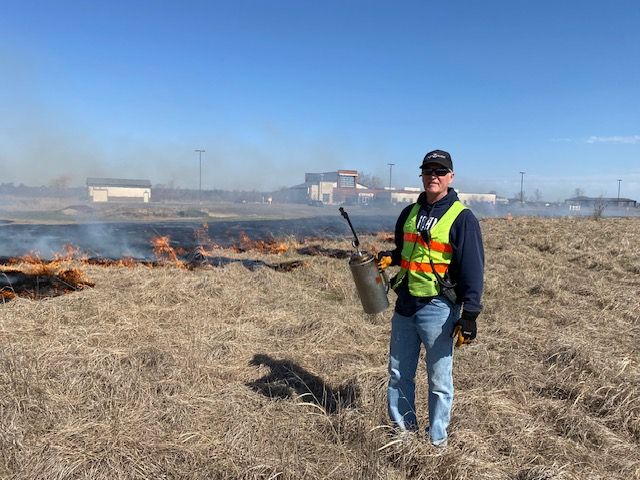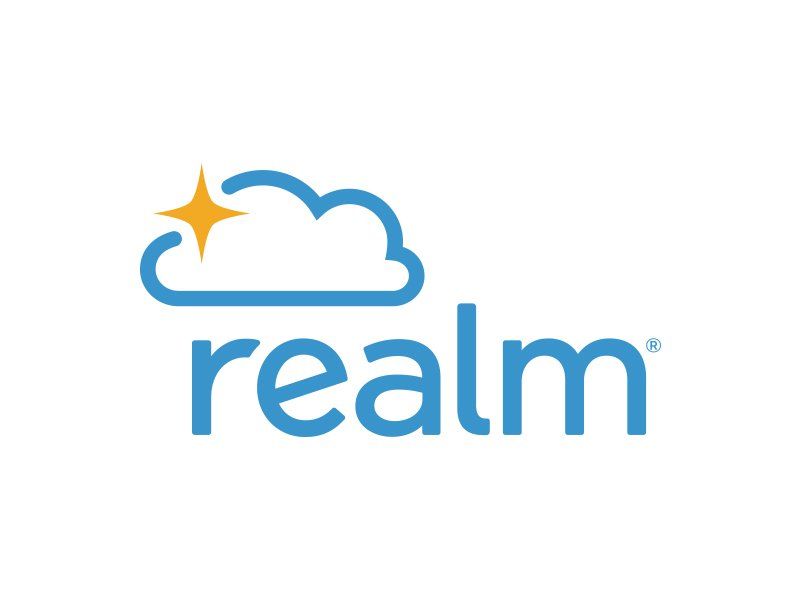OUR COMMITMENT TO CREATION
FUMC Land Stewardship Committee
The goal of this committee is to be stewards of God's creation on FUMC property and to encourage appreciation and sustainable use of the geographic diversity of the property. This geographic diversity makes the work of the committee a challenge. The property includes lawn turf and landscaped beds, next to the building and parking lot, prairie, storm water drainage ponds and ditches, and finally wetlands and a man-made pond abutting the property. Storm water drainage is a significant concern because as part of stewardship of our property, and the church is legally responsible to follow storm water and wetland regulations.
Why Burn Our Prairie?
Paula Tompkins, Land Stewardship member
Some people are surprised that an important part of developing and maintaining a prairie is a schedule of regular, controlled prairie burns. Regular, controlled burns are called prescribed burns. If we do not regularly burn our prairie, it becomes more susceptible to an uncontrolled prairie fire caused by a lightning strike or a cigarette thrown out a window. Uncontrolled prairie fires sometimes become dangerous wildfires.
Prescribed burns also are crucial for maintaining the health of an existing prairie and for prairie restoration. One benefit of prescribed burns is removing thatch that blocks the sun from germinating native plants and killing invasive plants and unwanted trees that can overpower native plants. Burning promotes the diversity of native prairie plants that can survive adverse weather conditions, such as drought. A second benefit of prescribed prairie burns is
adding nutrients to the soil, stimulating growth of native plants. Finally, burn management promotes growth of a diversity of prairie plants that provide food and cover for pollinators, birds, and animals.
How much land does FUMC steward?

